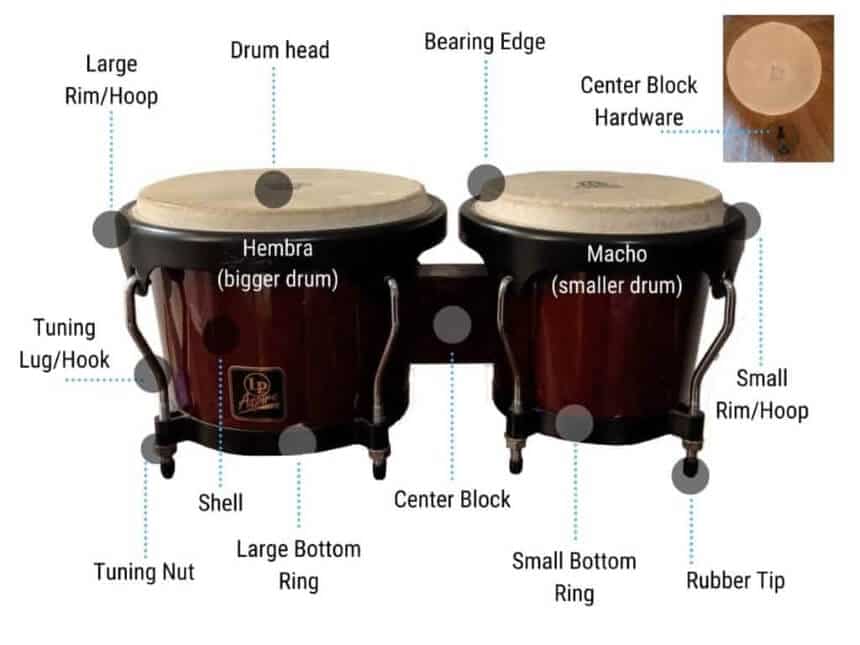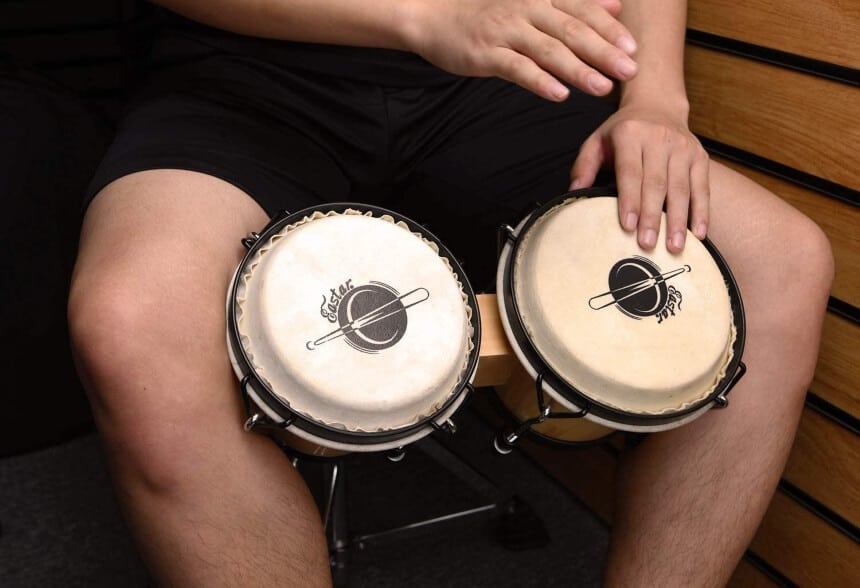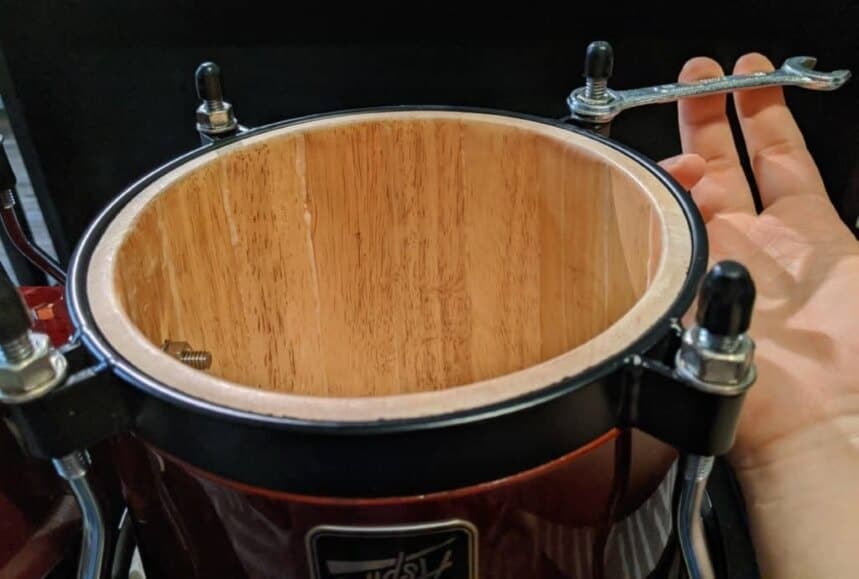If you have a good sense of rhythm, with practice you can learn to play the bongos. While the prospect of learning an instrument may seem daunting, bongos are relatively easy to learn. You don’t need formal lessons, but you can add some swing to a variety of types of music. Once you develop your confidence, you can be the life and soul of the party, bringing a beat to any music and helping others get into the party spirit.
If you’re wondering how to play the bongo drums, we’ll explore this topic in more detail. This will help you to learn how to buy the right instrument, care for it and play with confidence.
A bongo is a type of hand drum that can trace its origins back to Cuba and Africa. Like many other forms of percussion drum, bongos feature a circular wooden frame with a drum head. The head is traditionally made using animal skin, but many bongos today are made with synthetic materials.
Bongos consist of two drums. The larger drum is the hembra, while the smaller drum is the macho, which allows different tones. The drums are typically held between the knees and played using your fingers.
If you’re a newbie, you may feel overwhelmed by the various options you have to choose a set of bongos. While experienced players may prefer wood bongos, if you’re new to drumming, cheaper fiberglass bongos are likely to be sufficient.
Next, you need to consider the size. Smaller bongos have a higher pitch, while larger bongos have a deeper tone. Generally, larger bongos offer a wider range of notes. As a beginner, you may prefer to start smaller. This will allow you to familiarize yourself with the basic techniques without worrying about hitting a wider variety of notes.
Bongos can vary in cost, so try bongos with varying quality. The best drums will offer different sounds and have a different “personality”. So, before you make a final decision, try out a few sets.
Sit down in a comfortable chair that allows free movement of your arms. A basic dining chair is a good option, as you don’t want a chair that sinks, disrupting your posture or one with bulky arms that get in your way. The chair also needs to be a height where you can comfortably reach the floor with your feet.
Sit at the edge of your seat and place your legs at a 90-degree angle. This will make it easier to hold the bongos and keep your legs in position to support the drums.
If you’re right-handed, crook the small drum on your left knee, reverse this if you’re left-handed. Place the large drum on your right knee. Use both your legs to hold the drums firmly in place. You should feel comfortable, so readjust if necessary. Remember that as you get into the rhythm, you may bounce your knees, so keep a firm grip.
If you find it uncomfortable, or you are unable to sit with a set of bongos, there are stands that are specifically designed to mount bongos.
 Bongos are a type of hand drum. However, you’ll strike the heads using your fingers rather than your palms. There are a number of techniques to create different patterns and accents. There are books to teach you about these techniques, but you can also experiment in a number of ways.
Bongos are a type of hand drum. However, you’ll strike the heads using your fingers rather than your palms. There are a number of techniques to create different patterns and accents. There are books to teach you about these techniques, but you can also experiment in a number of ways.
Bongo tuning requires evenly tightening the tuning lugs to find the ideal resonance and pitch. It also helps to determine the proper interval between the drums. Although the prospect of tuning your bongos may seem complicated, you can accomplish this in a few steps.

Learning how to play the bongo can be a great way to increase your musicality without needing to pay for formal lessons. You can pick up many of the basic techniques with experimentation or using books or dvds. This allows you to take your time and learn at your own pace.
Once you develop your confidence, you can play along with your favorite songs. You may even feel confident enough to play along with jamming sessions around the campfire or at family gatherings. This will help to get the party going and ensure that everyone has a great time.